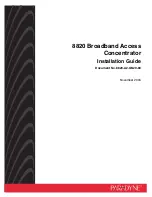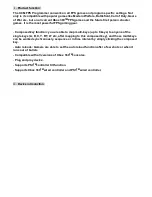
www.balluff.com
14
5.6.
Output format
Inclination output format: CAN
output = 100*α. (α = angle in degrees, factory default resolution is 0.01°). CAN
outputs are sent with PDOs.
For example:
Figure 13 - Output 1-axis ±180° sensor
Figure 14 - Output 2-axis ±90° sensor
In Figure 13, the sensor sends 1 axis inclination output with 2 Bytes Integer.
Byte1
Byte0
23
h
82
h
Inclination output: 2382
h
= 9090
d
= 90.9°
Table 4 - Output 1-axis ±180° sensor
In Figure 14, the sensor sends 2 axis inclination outputs with 4 bytes integer. The 1
st
two bytes are the X
inclination and the 2
nd
two bytes are the Y inclination (Table 5).
Byte3
Byte2
Byte1
Byte0
Y inclination
X inclination
00
h
82
h
0B
h
C8
h
0080
h
= 130
d
= 1.3°
0BC8
h
= 3016
d
= 30.16°
Table 5 - TPDO1 of BSI R65K0-HXXA-MYS090-S92/ST39
Besides inclination values, the device also provides acceleration, angular rate and device temperature. The user
can customise the device outputs by changing the TPDO mapping parame
ters. (→ Object 1A00
h
, 1A01
h
). For
example, 1
st
two bytes are the device temperature, the 2
nd
two bytes are the inclination output:
Byte3
Byte2
Byte1
Byte0
23
h
82
h
00
h
1A
h
Inclination output: 2382
h
= 9090
d
= 90.9°
Device temperature: 001A
h
= 26
d
°C
Table 6 - Customised TPDO message
5.7.
Boot-up p rocedure
When the device is powered on, it automatically enters NMT Initialisation state. In this state, the device will be
initialised with the default parameters of the manufacturer-specific profile area and of the standardized device
profile area. When initialisation is complete, a bootup message 00
h
will be sent with the heartbeat (700
h
+ Node
ID). If an error is detected during the boot up, an emergency message with the error information will be sent.
















































